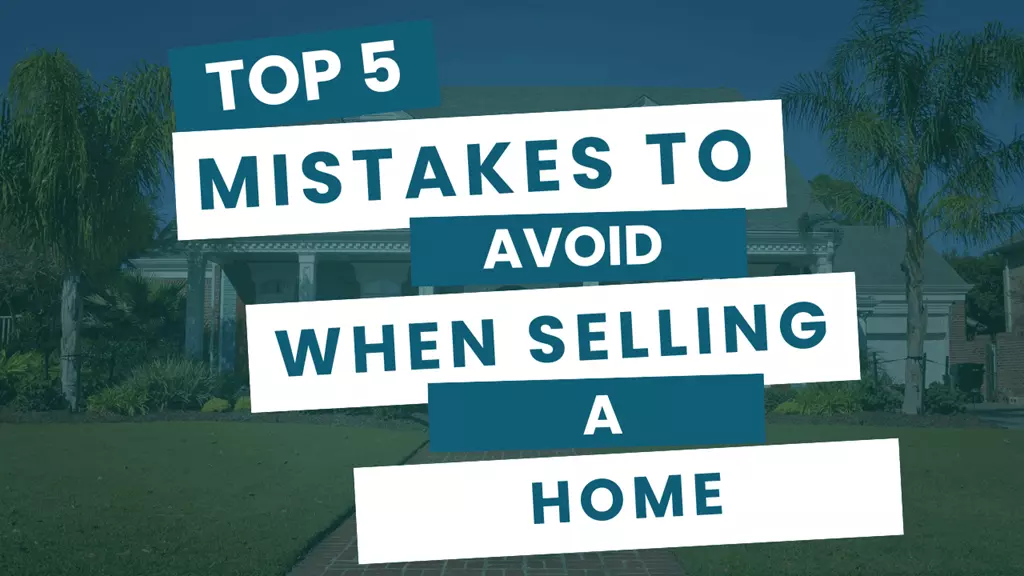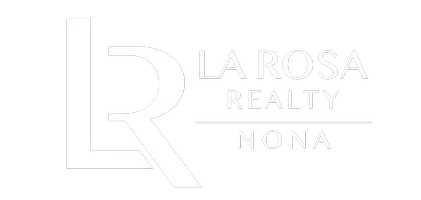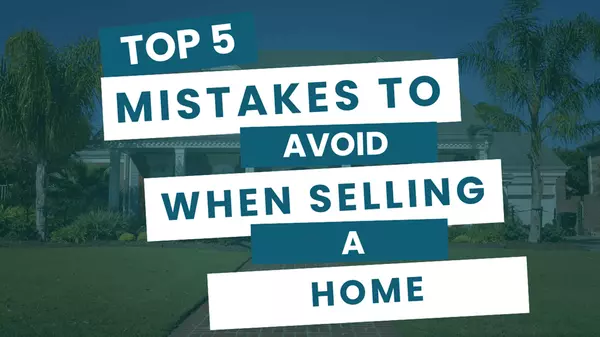5 Mistakes to Avoid When Selling Your Home in Today's Market

Navigating Today's Competitive Housing Market The Central Florida housing market has been on quite the journey these past few years, and if you're thinking about selling your home, you're stepping into a landscape that's vastly different from what we saw during the pandemic boom. Here's what that really means for you as a seller.
While we're not seeing the bidding wars and instant offers of 2021 and 2022, today's market still offers solid opportunities for sellers who get the fundamentals right. I've been working with families throughout Orlando, Lake Nona, St Cloud and beyond, and I can tell you that the homes selling quickly and for top dollar are the ones where sellers avoid some very costly mistakes.
The challenge now is that buyers have more choices and higher expectations. They're taking their time, doing their research, and they expect move-in ready homes with competitive pricing. This means there's less room for error than there was when any house would sell in days regardless of condition or price.
Over the next few minutes, I'll walk you through the five biggest pitfalls I see sellers encounter, and more importantly, how to avoid them. These aren't just theoretical problems, these are real situations I've navigated with clients, and the difference between getting them right or wrong can mean thousands of dollars and months of unnecessary stress.
Mistake #1: Pricing Without Understanding Current Market Dynamics
Let me start with something I see almost weekly: sellers who price their homes based on what their neighbor sold for six months ago, or worse, what Zillow told them their home was worth last year. In today's market, this approach can be devastating to your sale.
Here's what's happening right now in Central Florida that you need to understand. While we're still seeing appreciation in some areas, inventory levels have risen notably across the region. This shift gives buyers more options and increases the importance of strategic pricing. In neighborhoods like Lake Nona and St. Cloud, homes that would have sold for $50,000 over asking in 2022 are now selling closer to asking price or below if they're priced correctly from the start.
The danger of overpricing in today's market goes beyond just sitting on the market longer. When a home sits for 30, 60, or 90 days, buyers start wondering what's wrong with it. I've seen sellers eventually reduce their price to below where they should have started, simply because the market stigma of a "stale" listing has set in.
"The first two weeks your home is on the market are the most critical. That's when you'll get the most activity from serious buyers who are actively looking in your price range."
I recently worked with a family in St. Cloud who initially wanted to list their home for $450,000 because a similar home down the street had sold for that amount four months earlier. After running a current comparative market analysis, we discovered that similar homes were now selling closer to $430,000–$435,000. They were hesitant at first, but we priced it at $435,000 and had three offers within the first two weeks, ultimately closing at $417,000.
The key is using recent sales data ideally from the last 30–60 days and understanding current market conditions. Are homes in your area selling quickly or sitting? Are buyers asking for concessions? These factors should influence your pricing strategy, not just the highest comparable sale you can find.
Mistake #2: Underestimating the Power of First Impressions
In today's digital world, your home's first impression happens online, not when buyers walk through your front door. This is where I see sellers make some of their costliest mistakes, especially when it comes to photography and online presentation.
Consider this: over 90% of buyers start their home search online, and they'll scroll past your listing in about three seconds if the photos don't grab their attention. I've seen beautiful homes sit on the market simply because the listing photos were taken with a phone, poorly lit, or showed cluttered rooms.
Professional photography isn't just a nice-to-have anymore it's essential. The investment typically runs $300–$500, but it can easily add thousands to your sale price and cut weeks off your time on market. Good photos showcase your home's best features, make rooms look larger and brighter, and create an emotional connection with potential buyers scrolling through listings.
But it goes beyond just photos. Your home's curb appeal sets the stage for everything that follows. I recently worked with sellers in Lake Nona whose home had been on the market for 45 days with minimal activity. We spent one weekend pressure washing the driveway, mulching the flower beds, and adding some colorful plants. Within two weeks of relisting with new photos, we had multiple offers.
Virtual tours and video walkthroughs have become increasingly important, especially for out-of-state buyers moving to Central Florida. These tools help serious buyers get a feel for your home's flow and layout before scheduling an in-person showing, which means the people who do visit are more likely to be genuinely interested.
Don't overlook social media marketing either. Platforms like Instagram and Facebook can showcase your home to thousands of potential buyers in your area. A well-crafted social media campaign can generate interest from buyers who might not have found your listing otherwise.
Mistake #3: Ignoring Essential Repairs and Updates
Today's buyers have higher expectations than ever before, and they're looking for homes that feel move-in ready. This doesn't mean you need to do a complete renovation, but it does mean addressing the obvious issues that can turn buyers away.
I've seen sellers lose potential buyers over simple fixes like a leaky faucet, peeling paint around windows, or burnt-out light bulbs. These small issues signal to buyers that the home might have larger, hidden problems, even when that's not the case.
The key is focusing on high-impact, low-cost improvements that address both function and aesthetics. Fresh paint is almost always a good investment, it's relatively inexpensive but can completely transform how a space feels. Neutral colors work best because they appeal to the widest range of buyers and help them envision their own belongings in the space.
High-Impact Repairs
Fresh interior paint – $2,000-$4,000 – Potential Return: $4,000-$8,000
Professional deep cleaning – $300-$500 – Potential Return: $2,000+
Minor plumbing fixes – $200-$500 – Potential Return: $1,000+
Light fixture updates – $500-$1,000 – Potential Return: $1,500+
Landscaping refresh – $500-$1,500 – Potential Return: $3,000+
Kitchens and bathrooms deserve special attention because they're often deal-makers or deal-breakers. You don't need to do a full remodel, but simple updates like new cabinet hardware, a fresh backsplash, or updated fixtures can make these spaces feel more current and appealing.
I worked with a couple in Lee Vista who were getting feedback that their kitchen felt dated. Instead of a full renovation, we updated the cabinet hardware, added under-cabinet lighting, and painted the walls a fresh white. The total cost was under $1,500, but it completely changed how the kitchen photographed and felt to buyers.
Sometimes the question isn't whether to make repairs, but whether to sell as-is. If your home needs major work like a new roof, HVAC system, or significant plumbing repairs you might be better off pricing accordingly and marketing to investors or buyers who are comfortable with renovation projects.
Mistake #4: Inflexible Showing Schedules and Poor Staging
The way people buy homes has evolved significantly, and sellers who don't adapt to modern buyer expectations often struggle to generate serious interest. This includes everything from showing flexibility to how your home is staged and presented.
Buyers today are busy, and many are relocating from other states or have demanding work schedules. If you're only available for showings between 10 AM and 2 PM on weekdays, you're eliminating a huge portion of potential buyers. Yes, it's inconvenient to have people touring your home at various times, but remember that every showing is a potential sale.
Virtual showings have become another important tool, especially for out-of-state buyers. While nothing replaces an in-person visit, virtual tours can help serious buyers narrow down their choices and ensure they're genuinely interested before making the trip to see your home.
Staging mistakes can kill a sale before it starts. The goal isn't to showcase your personal style it's to help buyers envision themselves living in the space. This means depersonalizing your home by removing family photos, personal collections, and items that might distract from the home's features.
Empty homes can be just as problematic as cluttered ones. Vacant rooms feel smaller and colder, and buyers struggle to understand how the space flows. If you've already moved out, consider renting furniture for the main living areas, or at least ensure each room has a clear purpose and some basic furnishing to help buyers understand the scale.
Mistake #5: Letting Emotions Override Market Strategy
Selling a home is one of the most emotional financial transactions you'll ever make. This is the place where you've built memories, raised your family, or started your life in Central Florida. But when emotions drive your decision-making instead of market realities, it can cost you significantly.
Set clear business goals upfront, your bottom line price, your timeline, and what you're willing to negotiate. Most buyers will request inspections and negotiate repairs. It’s not personal; it’s part of the process. Don’t let emotion block a practical path forward.
Working with experienced real estate professionals can provide the objective perspective you need during this emotional process. A good agent will help you separate feelings from strategy and make decisions based on what will actually help you achieve your goals.
Turning Mistakes Into Market Advantages
The encouraging news? Avoiding these five mistakes instantly gives you a competitive edge. Homes that are priced right, prepped properly, and marketed well stand out especially now that buyers have more choices and are taking their time.
Your Path to a Successful Sale
Price according to today’s market, invest in visuals and basic updates, be flexible and responsive with showings, and prepare emotionally by sticking to a well-informed plan. When you check those boxes, you put yourself in the strongest position for a fast, profitable sale.
Let’s connect if you want to review what your home is worth in today’s market and walk through a game plan for selling it successfully.
Frequently Asked Questions (FAQ)
How long should I expect my home to stay on the market in today's conditions?
In Central Florida, well-prepared homes typically sell within 30-60 days, depending on location and price point. Homes in popular areas like Lake Nona or St. Cloud often move faster, while homes that need work or are overpriced can sit for several months. The key is pricing correctly and presenting well from day one.
Should I wait for the market to improve before selling?
Market timing is nearly impossible to predict accurately. Interest rates, inventory levels, and buyer demand can all shift quickly. Instead of trying to time the market, focus on the factors you can control, pricing, condition, and presentation. If you need to sell due to life circumstances, it's usually better to sell sooner rather than wait for theoretical market improvements.
How much should I spend on repairs and updates before listing?
A good rule of thumb is to invest in repairs that cost less than 50% of the value they add, focusing on safety issues and obvious cosmetic problems first. For example, if fresh paint will cost $3,000 but add $6,000 in perceived value, that's a smart investment. Major renovations rarely pay for themselves unless your home is significantly below neighborhood standards.
Is it worth hiring a professional stager in today's market?
Professional staging typically pays for itself through faster sales and higher offers, especially in competitive markets and higher price ranges. Even partial staging of main living areas can make a significant difference. If full staging isn't in your budget, focus on decluttering, depersonalizing, and ensuring each room has a clear purpose.
How do I know if my asking price is competitive?
Compare your home with recently sold properties (not just currently listed ones) in your immediate area from the past 30-60 days. Look at homes with similar square footage, bedroom/bathroom count, and condition. Consider getting a professional comparative market analysis from a local real estate agent who understands current market dynamics in your specific neighborhood.




